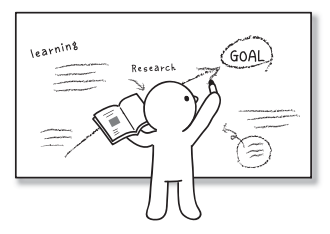Design Your Learning/OG
| Design Your Learning | |
| Contributors | Takashi Iba, Mami Sakamoto |
|---|---|
| Last modification | March 15, 2017 |
| Source | Iba & Sakamoto (2011)[1] |
| Pattern formats | OPR Alexandrian |
| Usability | |
| Learning domain | |
| Stakeholders | |
Also Known As: Learning Design (Learning Design)[2]
“Design is not just what it looks like and feels like. Design is how it works.” — Steve Jobs
“The limits of my language mean the limits of my world.” — Ludwig Wittgenstein
“It is not knowledge, but the means of gaining knowledge which I have to teach.” — Thomas Arnold
You’ve recognized that continual learning is an essential activity in a complex and fluid society.
It is not easy to learn how to learn.
- • There are several ways of learning.
- • It is unrealistic to try many ways of learning because time is limited.
- • It is quite difficult even for experts to explain their tacit knowledge.
Learn the way of learning from the Learning Patterns, which help you achieve good methods for learning.
- • Read through all patterns to understand what the Learning Patterns are like, especially the first half of each pattern, namely a pattern name, an introductory sentence and illustration, and quotes.
- • Read the detail of each pattern in which you are interested. In the second half of each pattern, there are descriptions about a context, a problem, forces (difficulties why the problem is hard to solve), a solution, and actions (how to solve problems in practice).
- • Read the patterns in order to recognize the problem that may easily occur in the context where you are.
- • When you face a problem in learning, find the corresponding patterns to find the solution to it.
- • When you talk about the way of learning, use the pattern name of the Learning Patterns as the term of a common language for learning.
References
- ↑ Iba, T., & Sakamoto, M. (2011). Learning patterns III: a pattern language for creative learning. In Proceedings of the 18th Conference on Pattern Languages of Programs, PLoP 2011 (p. 29). ACM: New York.
- ↑ Iba, T., & Miyake, T. (2010). Learning Patterns: a pattern language for creative learning II. In Proceedings of the 1st Asian Conference on Pattern Languages of Programs (p. 4). ACM:New York.
